Overview
Hello Plover Party People!
The snowy plover nesting season in Point Reyes has been a whirlwind to say the least! The first nests of the season popped up on March 28 in the restoration area (RA) and south NP (the area just north of the North Beach Parking lot) and we started detecting nesting at all the usual sites soon after. As of Thursday May 22, National Park Service, Point Reyes National Seashore Association, and Point Blue Conservation Science biologists have found 32 total nests: five on Limantour Spit, seven on Kehoe Beach, six in the Abbotts Lagoon restoration area, and 14 between Abbotts Lagoon and North Beach parking lot. The first half of the season generally sees lower nest and chick survival, and this year is no different. As you might recall on the day of our training [Saturday, May 3, 2025], winds were whipping, and gusts were recorded at about 60 mph out at the lighthouse. Over the course of that weekend, we lost 12 of the 17 active nests due to eggs and chicks being blown away, buried by sand, or abandoned due to birds not being able to tough out the rough conditions. As unfortunate as this was, there is a bright spot that emerged in the aftermath!
While checking nests the Monday after the windstorm, we found two eggs buried almost six inches deep in the sand at their nest bowl still in the process of hatching out. We collected these two eggs (and a third, likely unviable egg from the same clutch) after confirming they had been abandoned and rushed them to International Bird Rescue (IBR) in Fairfield. On the drive out of the field, one of the eggs hatched out while in the car! Once at IBR, the chick was put in an incubator and given some supplements while the other eggs were put in a separate incubator. As of today, there are two 17-day-old chicks at IBR getting nice and strong so we can release them back into the seashore later this season!
Our initial estimates of the breeding adult population appear to be on par with the 2024 breeding season with a minimum of 40 individuals: we estimate between 41 and 49 plovers are nesting in the seashore. We have observed a large number of unbanded plovers (n = 19) associated with nests in the park for a second year in a row, suggesting immigration into our breeding population (most of our breeding plovers are banded, so we generally know who is who). While it is interesting to see that we’ve had so many nests already this season (at least 11 more than this time last year), it is due in large part to these early failures from wind or, in a few cases, depredation. With 11 nests currently active in the seashore, we hope to see much more success in the coming weeks. These birds are tough and won’t give up easily!
If you have any questions, please feel free to contact Parker Kaye via email.
Productivity Stats
- 32 total nests this season
- 11 active nests
- 3 hatched
- 18 failed nests
- 0 chicks on PRNS beaches
- 0 chicks fledged
Photos
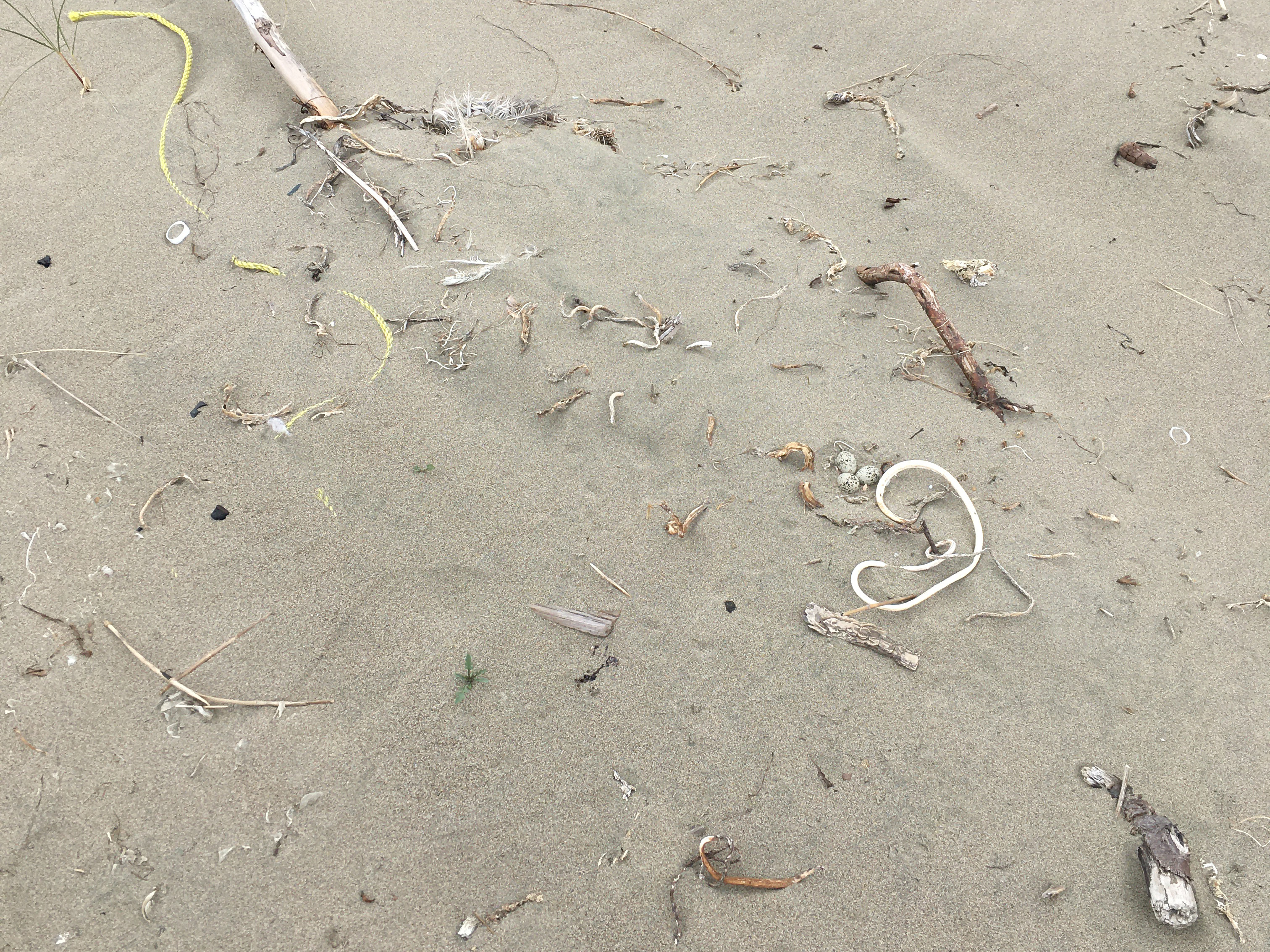 Overhead view of a snowy plover nest with 3 eggs next to dried bull kelp and woody debris, Limantour Beach.
Overhead view of a snowy plover nest with 3 eggs next to dried bull kelp and woody debris, Limantour Beach.
Photo credit: Parker Kaye / PRNSA
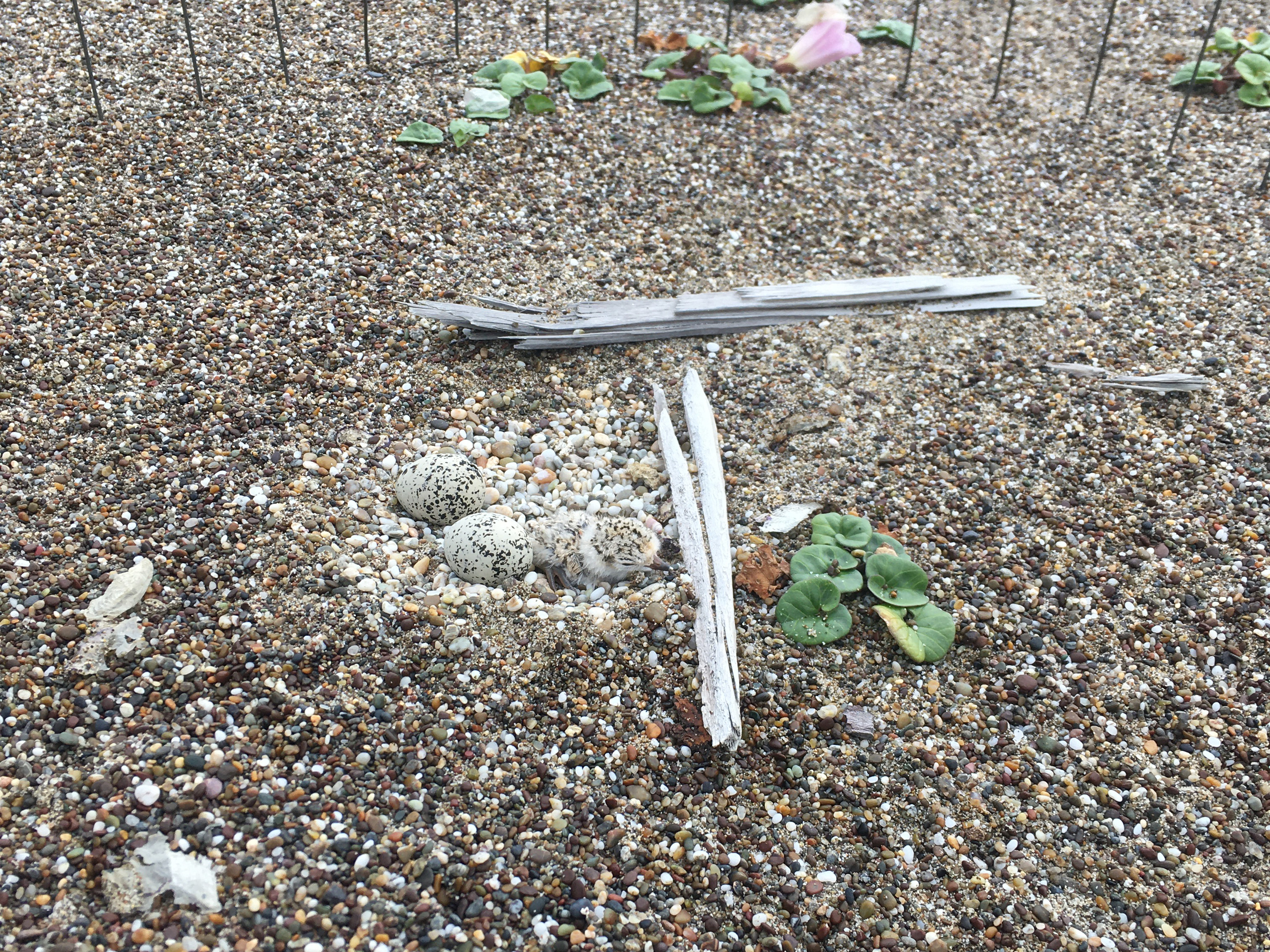 One freshly hatched snowy plover chick and two eggs in the process of hatching inside a mini nest exclosure, Restoration Area near Abbotts Lagoon.
One freshly hatched snowy plover chick and two eggs in the process of hatching inside a mini nest exclosure, Restoration Area near Abbotts Lagoon.
Photo credit: Parker Kaye / PRNSA
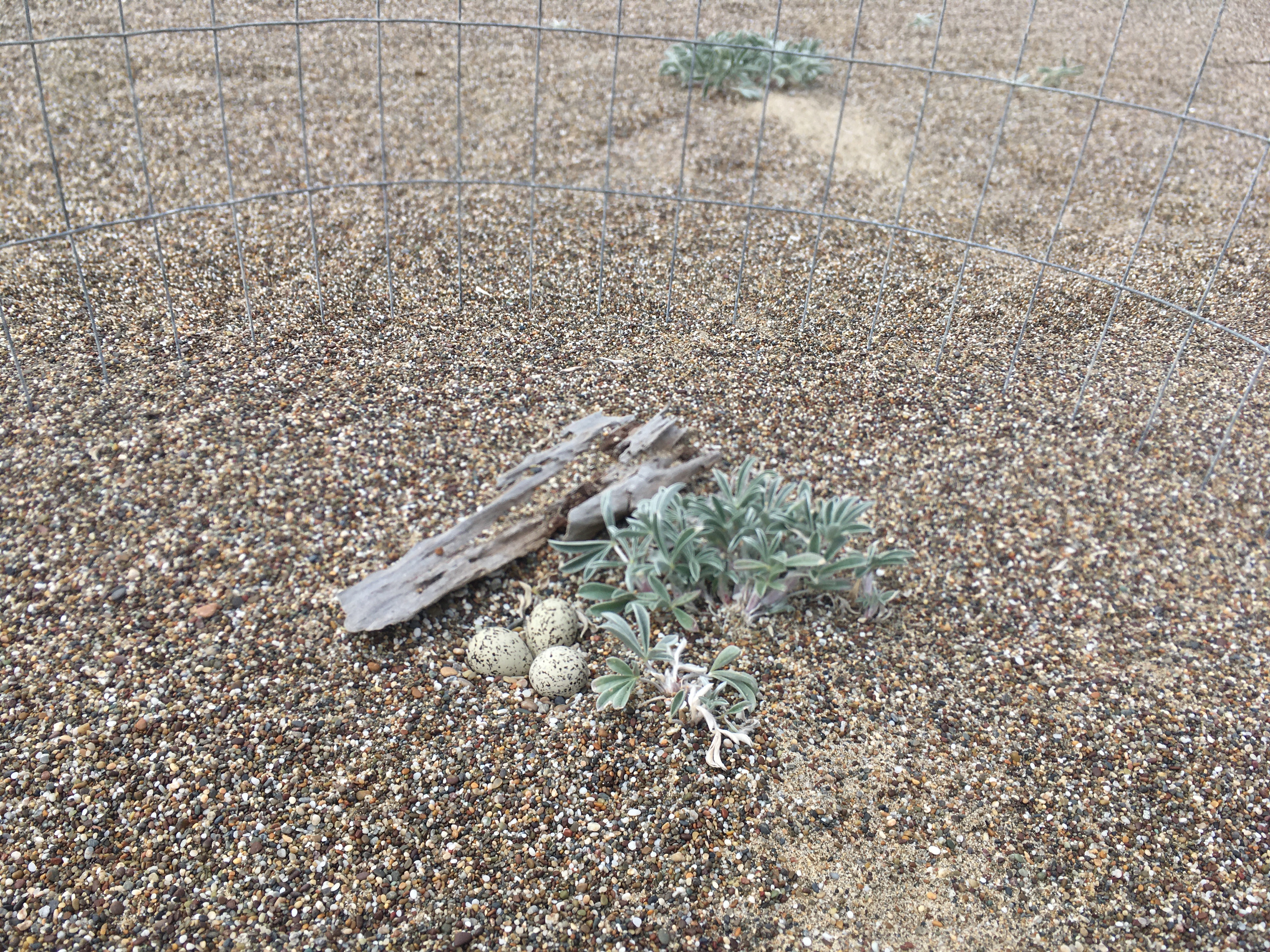 A three-egg snowy plover nest next to a piece of woody debris and Tidestrom’s lupine inside a mini nest exclosure, Restoration Area near Abbotts Lagoon.
A three-egg snowy plover nest next to a piece of woody debris and Tidestrom’s lupine inside a mini nest exclosure, Restoration Area near Abbotts Lagoon.
Photo credit: Parker Kaye / PRNSA
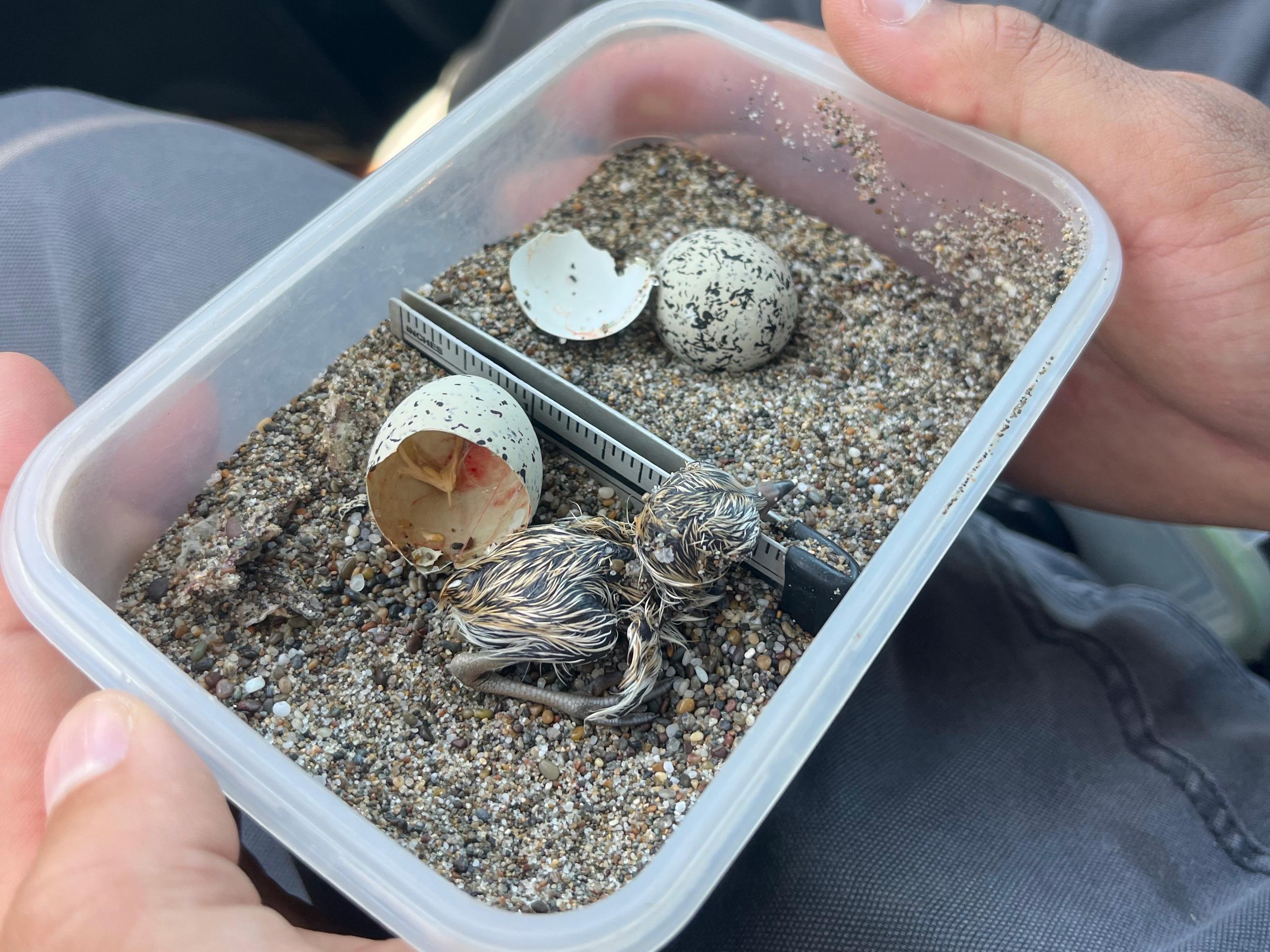 One five-minute-old chick and eggshell next to an egg still in the process of hatching in a container filled with warm sand to stabilize eggs during transport. When we began driving away from the beach, this chick was still in its egg and hatched out about 5 minutes into our drive, Abbotts Lagoon.
One five-minute-old chick and eggshell next to an egg still in the process of hatching in a container filled with warm sand to stabilize eggs during transport. When we began driving away from the beach, this chick was still in its egg and hatched out about 5 minutes into our drive, Abbotts Lagoon.
Photo credit: Carleton Eyster, Point Blue Conservation Science
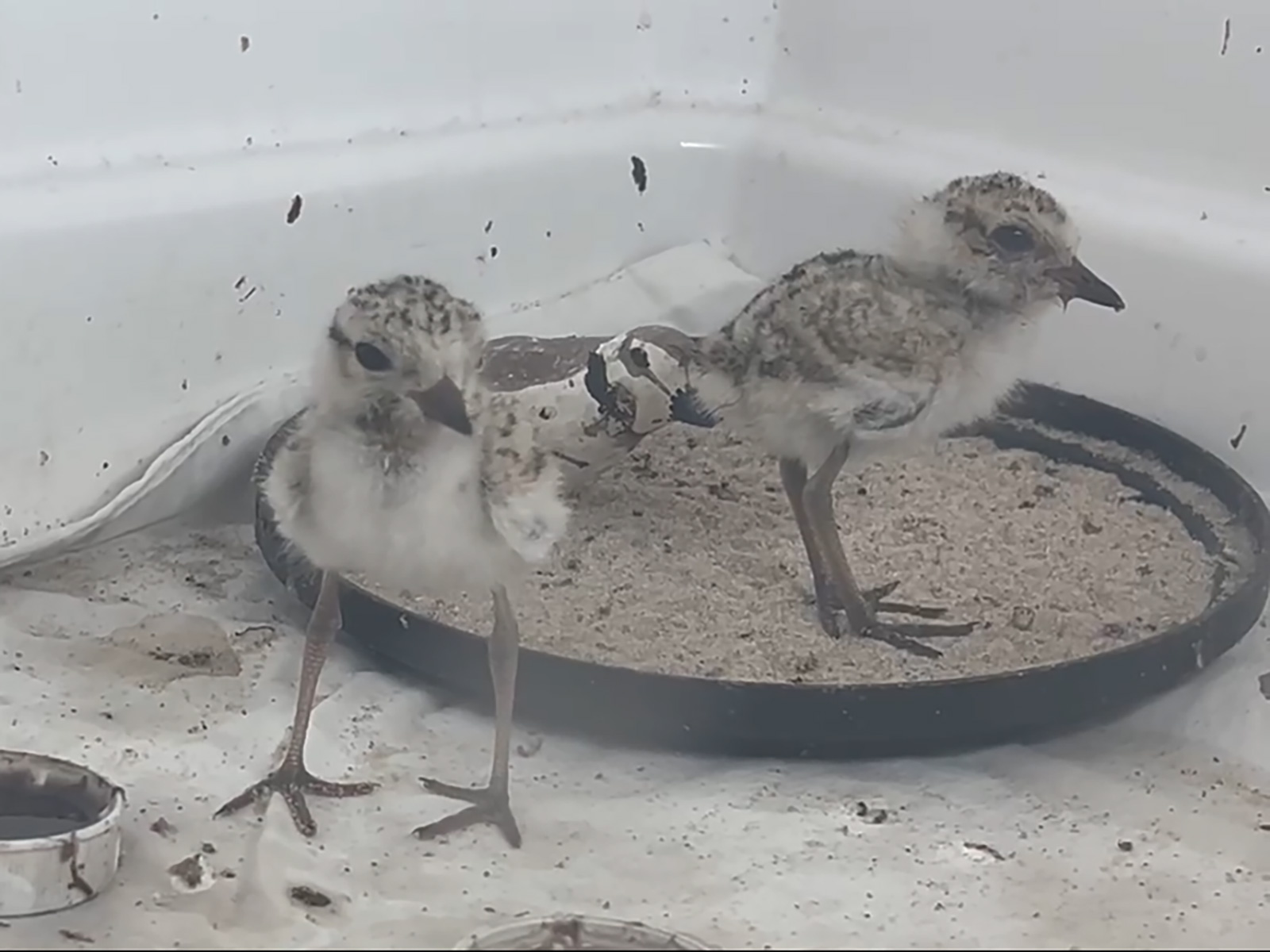 Two snowy plover chicks at eight days old being raised at an avian rehabilitation facility, International Bird Rescue (Fairfield).
Two snowy plover chicks at eight days old being raised at an avian rehabilitation facility, International Bird Rescue (Fairfield).
Photo credit: Carleton Eyster, Point Blue Conservation Science
The National Park Service shall not be held liable for improper or incorrect use of the data described and/or contained herein. These data and related graphics (if available) are not legal documents and are not intended to be used as such. The information contained in these data is dynamic and may change over time. The National Park Service gives no warranty, expressed or implied, as to the accuracy, reliability, or completeness of these data. For more information: https://www.nps.gov/disclaimer.htm
